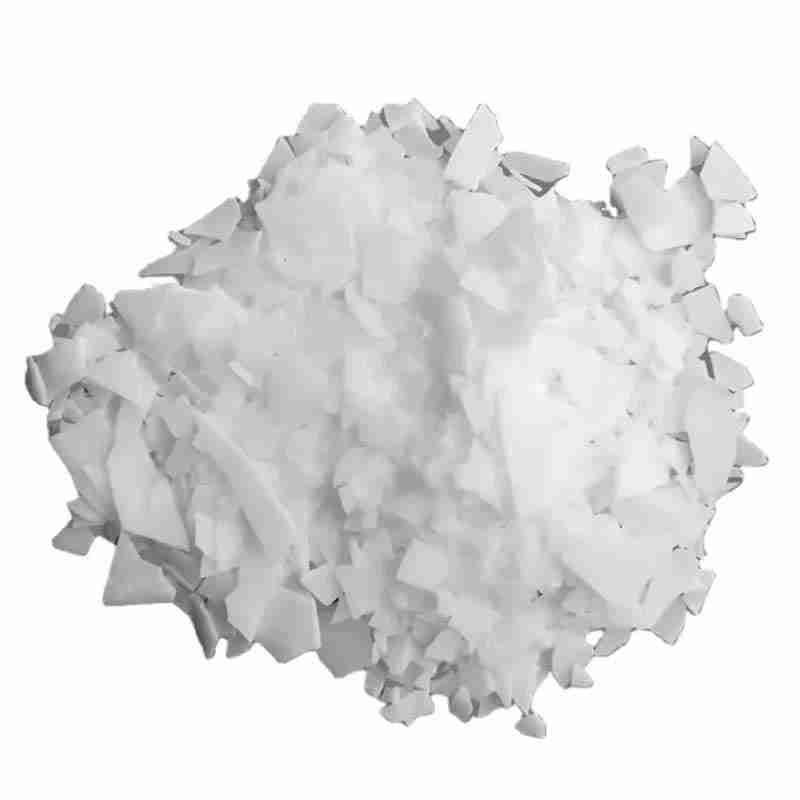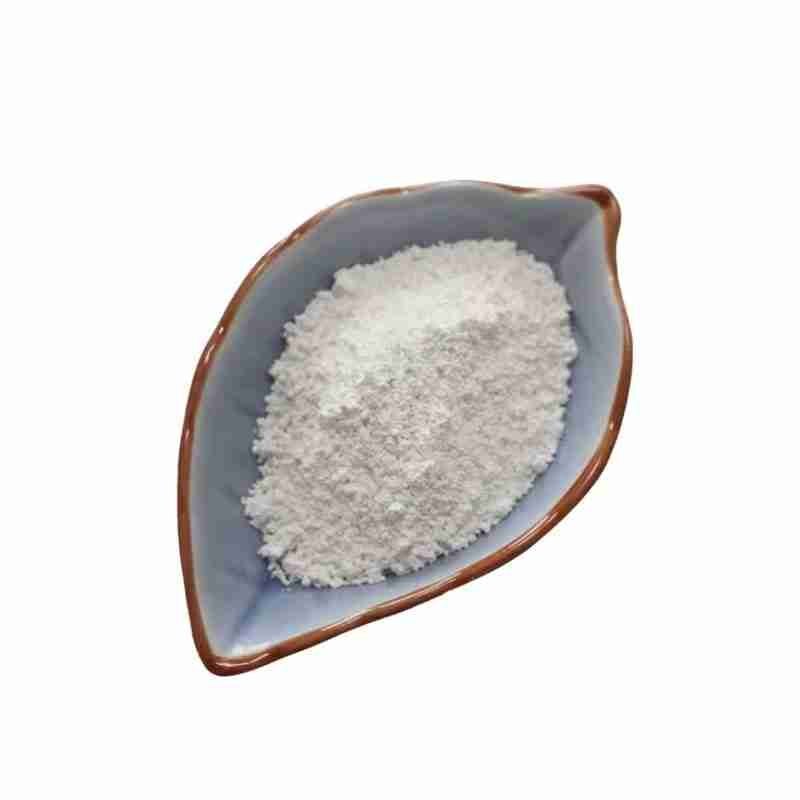Cetrimonium Chloride CAS #112-02-7
Cetrimonium chloride, additionally known as cetyltrimethylammonium chloride, is a white crystalline powder, easily soluble in isopropanol, soluble in water, and also produces a huge quantity of foam when trembled, and also can be blended with cationic, nonionic, and also amphoteric surfaces The active representative has great compatibility; good chemical security, warmth resistance, light resistance, pressure resistance, solid acid and alkali resistance; excellent infiltration, softening, emulsification, antistatic, biodegradability as well as sterilization residential properties.
发送询盘
Cetrimonium Chloride CAS #112-02-7
| N-Hexadecyltrimethylammonium chloride Basic information |
| Product Name: | N-Hexadecyltrimethylammonium chloride |
| Synonyms: | 1631(Cl);C16-alkyltrimethylammonium chloride;(1-Hexadecyl)trimethylammonium chloride;HEXADECYLTRIMETHYLAMMONIUM CHLORIDE SOL. , ~25% IN WATER;CETYLTRIMETHYLAMMONIUM CHLORIDE, 25 WT. % SOLUTION IN WATER;CETYLTRIMETHYLAMMONIUM CHLORIDE 25% SOLUTION;Trimethyl-1-hexadecanaminium chloride;cationpb40 |
| CAS: | 112-02-7 |
| MF: | C19H42ClN |
| MW: | 320 |
| EINECS: | 203-928-6 |
| Product Categories: | Alkylamine Salts & Quarternary Ammonium Salts (Surfactants);Ammonium Chlorides (Quaternary);Biochemistry;Cationic Surfactants;Hair Care;Home Care;Piperidines ,Piperazines ,Homopiperidines;Quaternary ammonium salt;Water Ttreatment Chemicals;Cationic Surfactants (for Biochemistry);Functional Materials;Quaternary Ammonium Compounds;Surfactants;Surfactants (for Biochemistry);bc0001;112-02-7 |
| Mol File: | 112-02-7.mol |
 |
|
| N-Hexadecyltrimethylammonium chloride Chemical Properties |
| Melting point | 232-234???C |
| Boiling point | 475.54??C (rough estimate) |
| density | 0.968?g/mL?at 25???C |
| vapor pressure | 0.006Pa at 25?? |
| refractive index | n20/D?1.3778 |
| storage temp. | Store below +30??C. |
| solubility | Water (Slightly) |
| form | Amorphous Powder |
| color | White |
| Specific Gravity | 0.968 |
| PH | pH(50g/l, 25??) : 6.0??8.5 |
| Odor | at 100.00?%. bland |
| Water Solubility | Soluble |
| BRN | 3657974 |
| InChIKey | WOWHHFRSBJGXCM-UHFFFAOYSA-M |
| LogP | 3.08 at 25?? |
| CAS DataBase Reference | 112-02-7(CAS DataBase Reference) |
| EPA Substance Registry System | Cetyl trimethyl ammonium chloride (112-02-7) |
| Safety Information |
| Hazard Codes | Xi,N,Xn |
| Risk Statements | 38-41-50-50/53-37/38-22-43-36/37/38 |
| Safety Statements | 26-39-60-61-37/39-36 |
| RIDADR | UN 3082 9/PG 3 |
| WGK Germany | 3 |
| RTECS | ML9145000 |
| F | 3 |
| TSCA | Yes |
| HazardClass | 8 |
| PackingGroup | III |
| HS Code | 29239000 |
| Hazardous Substances Data | 112-02-7(Hazardous Substances Data) |
| Toxicity | LD50 skin in rabbit: 4300uL/kg/24H |
- 2
- 2-diallylpent-4-en-1-amine
- 4
- 95-16-9
- Ammonium sulfamate
- Benzothiazole
- cas:67889-00-3ح2
- cas:83524-75-8 | pigment black 32
- cas:928836-00-4 | 2
- cas:932745-70-5 | 4
- Chemical Minerals
- Coconut diethanolamide
- Daily Chemicals
- discount
- for sale
- General pvc resin
- hexyl D-glucoside
- in stock
- Lauramidopropyl betaine
- LAURIC ACID MONOETHANOLAMIDE
- Petroleum Additives
- Plasticiser
- Ploymers
- price
- PVC
- quotation
- Raw Materal
- Remove term: Petroleum Additives Petroleum Additive
- SODIUM ETHYL 2-SULFOLAURATE
Related Products
Chemical Name: UV-120
Other Name: (2’,4’-Di-tert-butylphenyl 3,5-di-tert-butyl-4-hydroxybenzoate)
CAS No.: 4221-80-1
Molecular Fomula: C29H42O3
Molecular weight: 438.66
Assay: ≥99%(LC)
Lauramidopropyl betaine is a mild, biodegradable surfactant commonly used in personal care products and cleaning formulations. It is derived from coconut oil and is known for its foaming and wetting properties, making it ideal for creating rich lathers. This ingredient is particularly favored for its gentleness on the skin and its ability to cleanse without causing irritation, making it suitable for sensitive skin types. It also contributes to the product’s viscosity and stability.
Chemical Name: Ashwagandha Extract
Synonyms: Withania somnifera, ext.; Withania Somnefera Extract
CAS: 90147-43-6
Appearance: Brown
Lauryl Glucoside is an eco-conscious non-ionic surfactant, derived from sustainable lauric acid and glucose. It offers superior mildness and biodegradability, making it an ideal choice for formulating gentle and effective cleaning agents in personal care and household products. Its bio-based nature aligns with the growing demand for green chemistry solutions.
Chemical Name: Potassium Castorate
CAS No.: 8013-05-6
Molecular Formula: C57H107K3O12
Molecular Weight: 1101.74718
Appearance: Yellow Liquid
Lauramidopropyl betaine is a mild, biodegradable surfactant commonly used in personal care products and cleaning formulations. It is derived from coconut oil and is known for its foaming and wetting properties, making it ideal for creating rich lathers. This ingredient is particularly favored for its gentleness on the skin and its ability to cleanse without causing irritation, making it suitable for sensitive skin types. It also contributes to the product’s viscosity and stability.
Product name:Cyclopentane
Purity:96%
Appearance:White powder
Package:25kg/bag
Sample:Available
Monostearin is a versatile emulsifier and emollient derived from glycerol and stearic acid. It is instrumental in stabilizing emulsions and enhancing the texture and consistency of a wide range of products in the cosmetics, food, and pharmaceutical sectors.
Chemical Name: Choline salicylate
CAS No.: 2016-36-6
Molecular Formula: C12H19NO4
Molecular Weight: 241.28
Appearance: Red-Brown Crystal
Decyl glucoside, scientifically known as ??-D-Glucopyranoside, is a non-ionic surfactant derived from renewable resources, such as glucose and fatty alcohols. It is a biodegradable and mild alternative to traditional surfactants, making it a preferred choice for eco-friendly and sensitive skin formulations.
This compound is characterized by its ability to form stable emulsions and foams, which are essential properties in a variety of applications, including personal care products and household cleaning agents. Decyl glucoside is valued for its low irritation potential and excellent skin compatibility, making it suitable for use in baby care and cosmetic products.
Chemically, decyl glucoside features a hydrophilic head and a hydrophobic tail, allowing it to effectively reduce surface tension and solubilize oils in water. Its mildness and biodegradability contribute to its use in formulations that require gentle cleansing without compromising the integrity of the skin’s natural barrier.
In summary, decyl glucoside is a versatile and sustainable surfactant that offers a balance of performance and safety. Its eco-friendly profile and compatibility with sensitive skin types make it an ideal ingredient for a wide range of personal care and cleaning products.
Chemical Name: 1,1,2,2-Tetrachloroethane
Other Name: Tetrachlorethane
CAS No.: 79-34-5
Molecular Formula: C2H2Cl4
Molecular Weight: 167.85
Appearance: Liquid
Chemical Name: 3-Hydroxybutyric acid
CAS No.: 625-71-8
Molecular Formula: C4H8O3
Molecular Weight: 104.1
Appearance: White powder
















